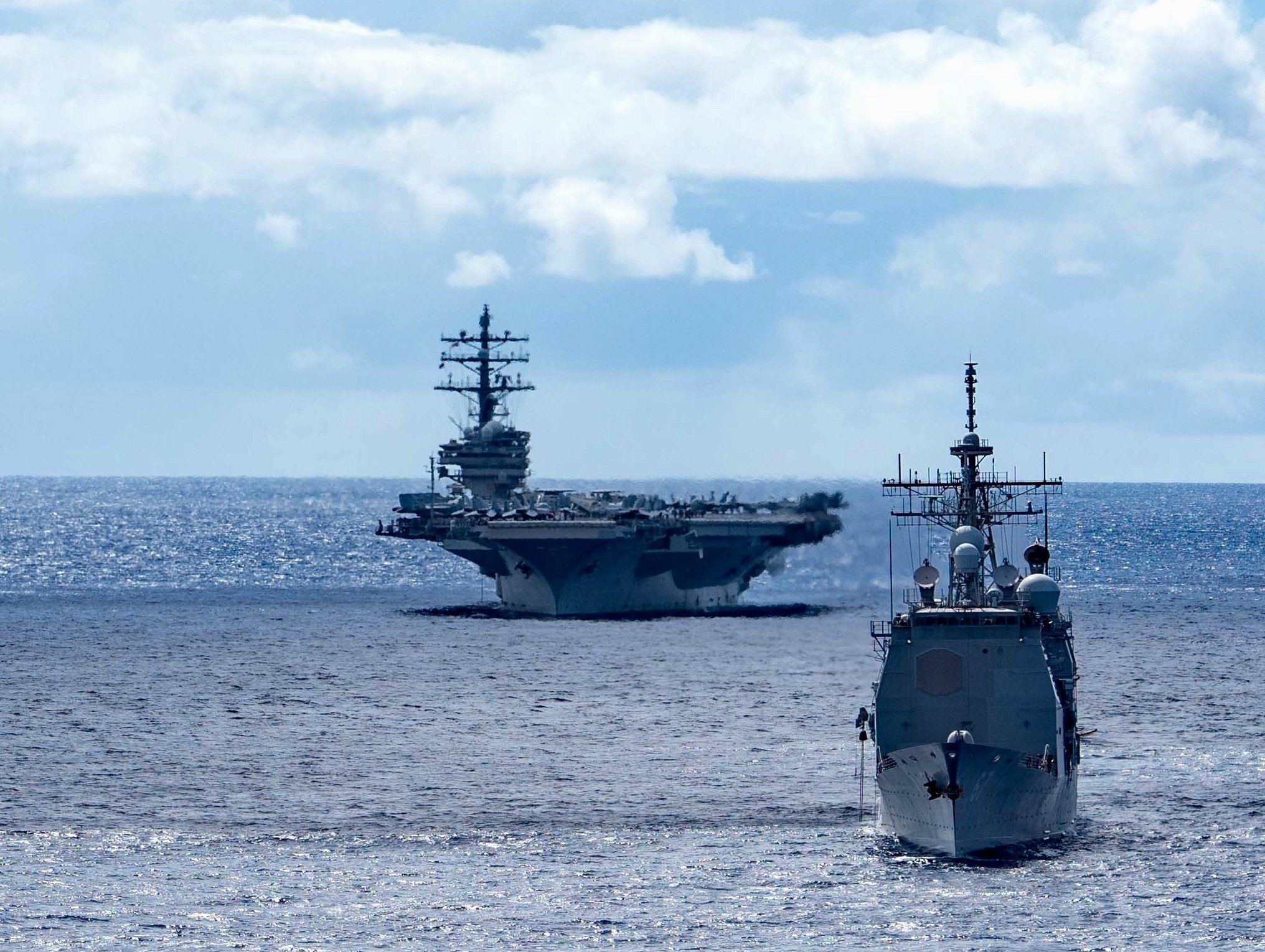
Dispatching the Navy’s Japan-based forward-deployed aircraft carrier to the Middle East earlier this year to bolster the withdrawal from Afghanistan was a major strategic error, a top lawmaker on the House Armed Services Committee said today.
Rep. Elaine Luria (D-Va.), a former nuclear-qualified surface warfare officer and current vice chair of HASC, criticized the move on Wednesday, arguing it sent the wrong message to China.
“We understand that the Western Pacific is the priority theater. We have to act like it. We just keep getting drawn back to the Gulf. I mean, I would say in my opinion, one of the biggest strategic mistakes that has been made in any of our lifetime, is that the Ronald Reagan was taken from 7th Fleet and sent to 5th Fleet to support the withdrawal from Afghanistan,” Luria said at the U.S. Naval Institute’s Defense Forum Washington. “What kind of message do you think that sends to the Chinese? That we’re that easily distracted. That we take our only carrier in the Pacific for a certain period of time and take it out of theater.”
Reagan – which is based in Yokosuka, Japan – spent nearly three months operating in the Middle East this summer as the U.S. military withdrew forces from Afghanistan after two decades of war. It was the first time since 2003 – when the former USS Kitty Hawk (CV-63) operated in the Persian Gulf to bolster the U.S. invasion of Iraq – that the U.S. military sent its Japan-based carrier to the region, a point Luria noted.
The vice chair of HASC, who also sits on the HASC seapower and projection forces subcommittee, argued that while China is the Defense Department’s top priority, its planning and budgets do not show this is the case.
“We have to act like it. We have to deploy our ships there. We have to look at more forward-basing arrangements and then also the familiarity of our ships with operating within that theater. I mean, I think that our submarine force – and I would say unequivocally that our submarine forces really continue to maintain our advantage against the Chinese –but I also think that our submarine forces routinely and continuously [are] operating in the same environment in which they’ll fight,” Luria said.
“I think for our surface force – the rotational nature of our deployments – that we could improve on the familiarity with the operating patterns of other navies and ships and fishing fleets and kind of just the environment within the Pacific by having those ships operate more routinely, more deliberately in certain areas. And [I] have even considered having as an idea, standing up some standing maritime groups such as we might have in the Mediterranean and the North Atlantic with SNMG1 and [SNMG]2,” she added, referring to Standing NATO Maritime Group 1 and Standing NATO Maritime Group 2.
Luria argued the Pentagon does not have a cohesive naval strategy that the Biden administration’s top leadership supports, and this affects the Navy’s ability to deliver a budget that mirrors its needs.
“No one ever comes to us and says ‘here’s what we need. Here’s why we need it. And here’s the risk of not doing it,'” she said.
The Virginia Democrat said this leads to a “shell game” during the budget process, pointing to the Navy’s Fiscal Year 2022 request that only sought one Arleigh Burke-class destroyer, despite the service’s plans to buy two under a signed multi-year procurement deal.

“I don’t think that there’s really a coherent maritime strategy bought into from the administration, from the top down and from every level of leadership in the Pentagon. And without being able to convey what the strategy is, I feel that the process is kind of just a shell game with the budget,” Luria said.
“White House says, ‘here’s what DOD’s top line’s going to be.’ It gets splits into thirds at the Pentagon. The Navy says, ‘well, here’s what we’re going to get. I guess we need to come up the best with we can with what we think we’re going to get.’ They come over to Congress and we get the result … of a budget that wants to shrink the Navy and only build one destroyer this year,” she added. “And then we have to add back to it. So without being able to clearly convey the risk – here’s the strategy, the strategy drives the requirements, the requirements drive the [Program Objective Memorandum] and the POM drives the budget – there’s really no way to clarify what the risk is of not doing the things that I think are essential to the Navy.”





